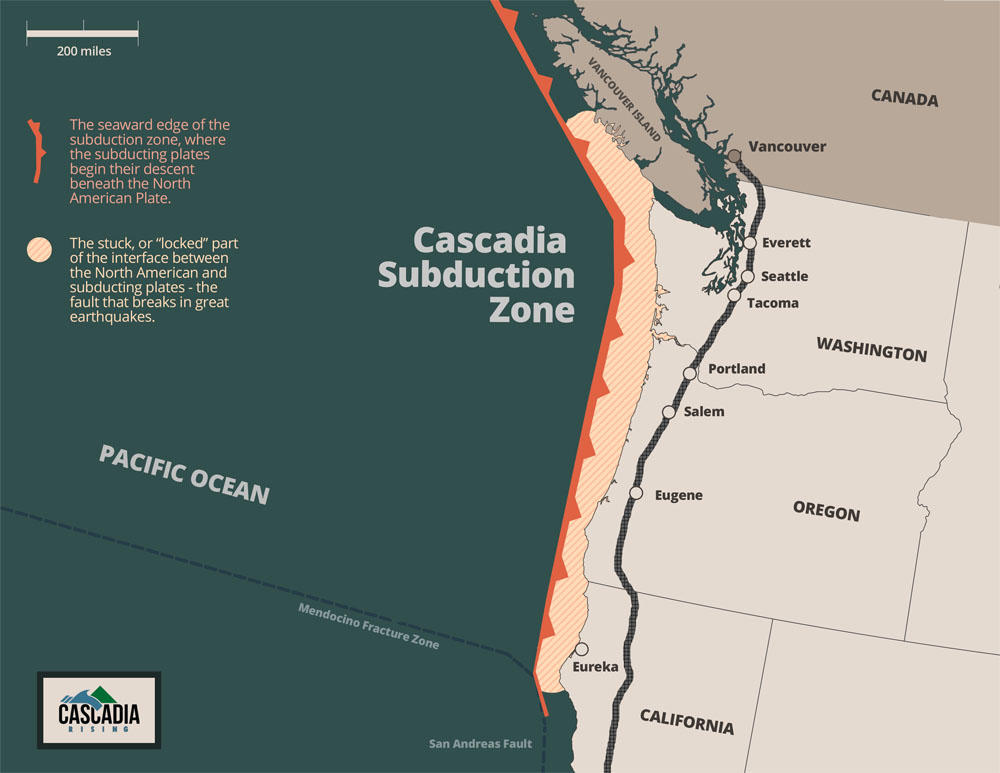By David Jacobson, Temblor
Check your seismic hazard rank

While most of the earthquakes in Washington D.C. over the last few months have been figurative, the U.S. House of Representatives recently passed legislation directed at allocating funds towards the purchase and installation of an earthquake early warning system for the Pacific Northwest. While the bill still needs to go through the Senate and be signed into law by the President, it passed overwhelmingly in the House by a vote of 395-11.
This piece of legislation was introduced to the House on January 24 by Oregon democrat Peter DeFazio. DeFazio’s rationale for introducing such legislation is simple, “We have known about the threat posed by the Cascadia Subduction Zone for decades, and yet we have failed to prepare and protect our coastline from a catastrophic earthquake.” The Cascadia Subduction Zone lies just off the Oregon and Washington coasts, and stretches for 1,000 km from Cape Mendocino in Northern California, to Vancouver Island in Canada. This fracture zone is capable of generating M=9+ earthquakes and deadly tsunamis. While cities in the Pacific Northwest are attempting to prepare for what will eventually happen, this move by the Legislative Branch shows awareness and initiative.

Should this bill become law, it would result in more than just an earthquake early warning system for the Pacific Northwest. The text of the bill states that the President would establish an Earthquake and Tsunami Task Force. This task force would be responsible for “developing a comprehensive strategy and recommendations on how the Nation should prepare and plan for, mitigate against, respond to, recover from, and more successfully adapt to a covered event in the Cascadia Subduction Zone.” Included in this task force would be federal agencies, the states of Oregon, Washington, and California, Indian tribes, local governments, and research institutions such as universities.
In purchasing and implementing an earthquake early warning system for the West Coast, Representative DeFazio hopes that lives and billions of dollars of damage could be saved. The idea behind this is that with ample warning, trains and facilities could be automatically shut down, and people could prepare themselves. In order to support this system, geodetic networks would be improved, and additional seismometers would be installed to improve the current network. It should be pointed out that scientists at both the University of Oregon and University of Washington are currently working on an early warning system with several other institutions along the West Coast. So, this is not a system that would have to be built from the ground up, but rather improved and tested. Now we just have to see if the rest of the Legislative Branch and the President see this as a “common sense bill” like DeFazio does. Should any new information come in, we will update this post.
References
Congress.gov
theworldlink.com
- Earthquake science illuminates landslide behavior - June 13, 2025
- Destruction and Transformation: Lessons learned from the 2015 Gorkha, Nepal, earthquake - April 25, 2025
- Knock, knock, knocking on your door – the Julian earthquake in southern California issues reminder to be prepared - April 24, 2025
